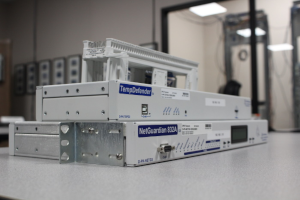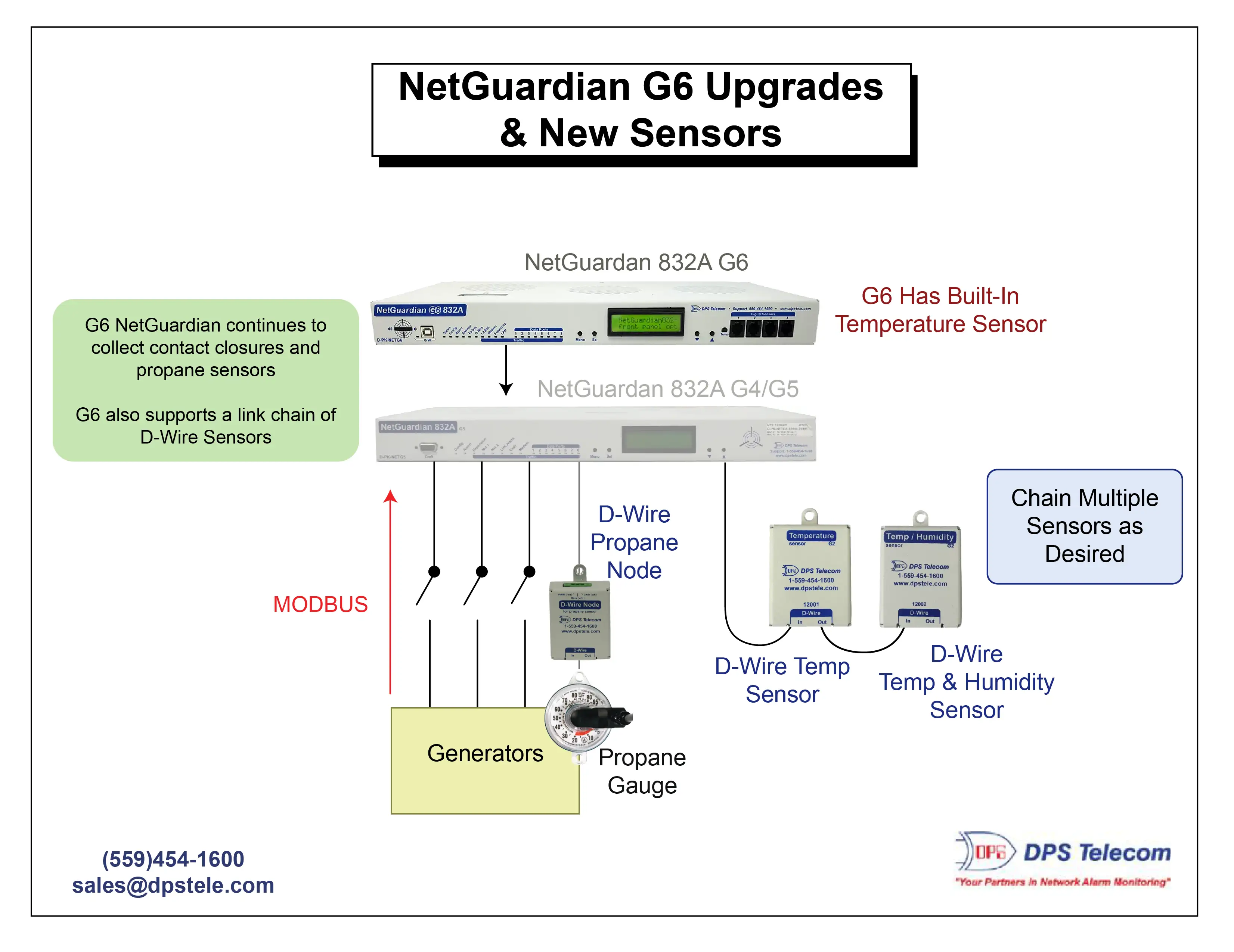Check out our White Paper Series!
A complete library of helpful advice and survival guides for every aspect of system monitoring and control.
1-800-693-0351
Have a specific question? Ask our team of expert engineers and get a specific answer!
Sign up for the next DPS Factory Training!

Whether you're new to our equipment or you've used it for years, DPS factory training is the best way to get more from your monitoring.
Reserve Your Seat TodayIt's easy to think that your network is "ready for anything" if it's been reliable in the past. However, issues can arise as your historically reliable system grows older.
You need good remote monitoring devices to be sure (not just hopeful!) that everything is going well.
As your system ages, equipment may fail to meet the needs of a modern day telecom network. An older system may have devices that don't support modern protocols with stronger security features. Another danger of older gear is the risk of not meeting newer codes, standards, and requirements put in place for your system.
Without a reliable system that is suited to meet modern needs, you won't be able to keep up with what is expected of you. Updating your system can help keep your system up-to-date while eliminating the need for a complete overhaul.
"Critical communications infrastructure alone experienced nearly 4,000 intentional theft/vandalism incidents in just three months of 2024."
Let's now further discuss the risks of older systems, the benefits of upgrades, and how to assess if your system needs an upgrade to better prepare you for emergencies at your remote sites.

Without a reliable monitoring system in place, many things can go wrong without you realizing it. You might get stuck with:
These are precisely the types of problems trustworthy and reliable gear can solve.
A dependable remote monitoring system does more than just send alarms - it actively protects you from unexpected issues and emergencies. A reliable system should offer:
A strong system keeps an eye on everything that matters at your remote sites. This includes:
A dependable system makes sure that when something goes wrong, you'll know about it immediately. Features like real-time SNMP traps, email alerts, and SMS notifications keep your team informed. This way, they can take action before a minor issue becomes a major outage.
As your network grows, your monitoring system should be able to grow with it. That means your system should offer:
Today's networks demand more than just physical security. A strong system includes:
If your monitoring system goes down during a power failure, it's useless. That's why a truly reliable setup includes:
Your system needs monitoring equipment that not only keeps up with modern challenges but also strengthens your overall infrastructure. The NetGuardian 832A G6 is designed to do exactly that. With a reputation of trusted performance, this next-generation RTU (Remote Telemetry Unit) enhances reliability, improves scalability, and simplifies remote site management with:
Unlike previous generations, the G6 features an internal temperature sensor, eliminating the need for extra hardware. This means:
D-Wire technology takes the hassle out of monitoring by enabling plug-and-play sensor chains. Instead of requiring separate wiring for every sensor, you can daisy-chain multiple sensors together, making expansion easy and cost-effective.
With the G6's D-Wire support, you can monitor:
Already using older contact closures or propane sensors? That's not a problem. The G6 is designed for easy integration, so you can keep using the sensors you already have. This allows for:
If your remote sites rely on backup generators, MODBUS support on the G6 ensures you're always prepared. With real-time MODBUS tracking, you can:
Upgrading to the NetGuardian 832A G6 means investing in a smarter, more reliable network - one that helps you prevent downtime, respond to issues faster, and scale as your needs grow.
Before D-Wire technology, you had to:
D-Wire completely changes the game by providing:
For large deployments, such as big data centers or vast utility networks, D-Wire alone can save thousands of dollars in setup and ongoing maintenance.
Natural disasters - storms, fires, earthquakes - can strike at any time. If your remote sites aren't prepared, you risk massive downtime and expensive repairs. The NetGuardian G6 helps you stay proactive against natural disasters with:
By catching these issues in advance, you can make sure your operation remains stable - even when mother nature throws her worst at you.
There's also cost savings to consider: Propane tank telemetry saves real money. Superior Propane reports 40,000 avoided deliveries per year, worth ≈ $2.6 million in truck, fuel, and labor savings - on just 6 % of its customer base. Imagine the combined impact of reducing fuel delivery expenses while simultaneously making sure that your sites will have backup power when they need it.
Generators are too important to be managed any uncertainty. A "best guess" styled approach can leave your system completely powerless. When your main power fails, you need your backup system to kick in.
With MODBUS support, the NetGuardian 832A G6 can:
By closely watching these metrics, you'll reduce risk, lower your fuel costs, and stretch the lifespan of your backup power systems.
Real-time MODBUS monitoring improves your labor utilization by dispatching your crews only when service is truly required based on actual monitored metrics.
Here's a side-by-side comparison to show why so many organizations are making the jump from older models:
| Feature | NetGuardian 832A G4 & G5 | NetGuardian 832A G6 |
|---|---|---|
| Built-in Temperature Sensor | No | Yes |
| D-Wire Sensor Support | No | Yes |
| MODBUS Generator Integration | Yes | Yes |
| Contact Closure Inputs | Yes | Yes |
| Scalability | Limited | Expandable |
| Installation Complexity | More wiring | Plug-and-play |
If you're already using G4 or G5 units, the upgrade is almost a no-brainer. With a simple upgrade, you'll be able to eliminate messy wiring, scale monitoring more easily, and reduce the time and costs of adding new sensors. Plus, you get a 20% credit toward your new G6 units when you turn in your older G4 or G5 units. This allows you to further offset the costs of expensive overhauls or replacements.
I understand you're busy - and that's exactly why the NetGuardian G6 exists. It saves you time, headaches, and money by offering classic high-quality remote monitoring with modern security standards.
To get help planning an upgrade or just iron out device specs (maybe you have a unique environment or need specialized gear!), just give me a call. I can walk you through how the G6, or a semi-custom build, can fit into your setup.
Call (559) 454-1600 or email sales@dpstele.com to get started.

Andrew Erickson
Andrew Erickson is an Application Engineer at DPS Telecom, a manufacturer of semi-custom remote alarm monitoring systems based in Fresno, California. Andrew brings more than 18 years of experience building site monitoring solutions, developing intuitive user interfaces and documentation, and opt...